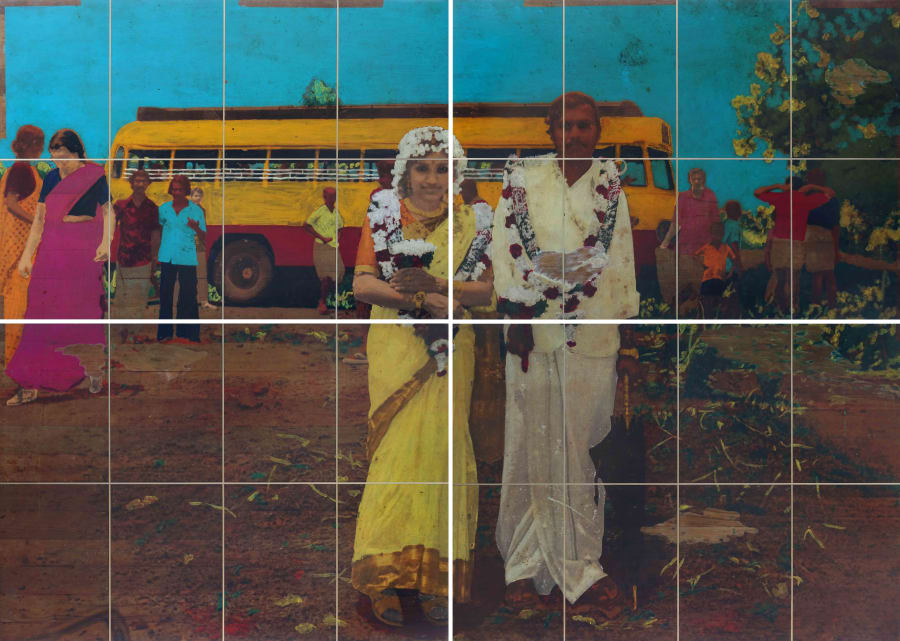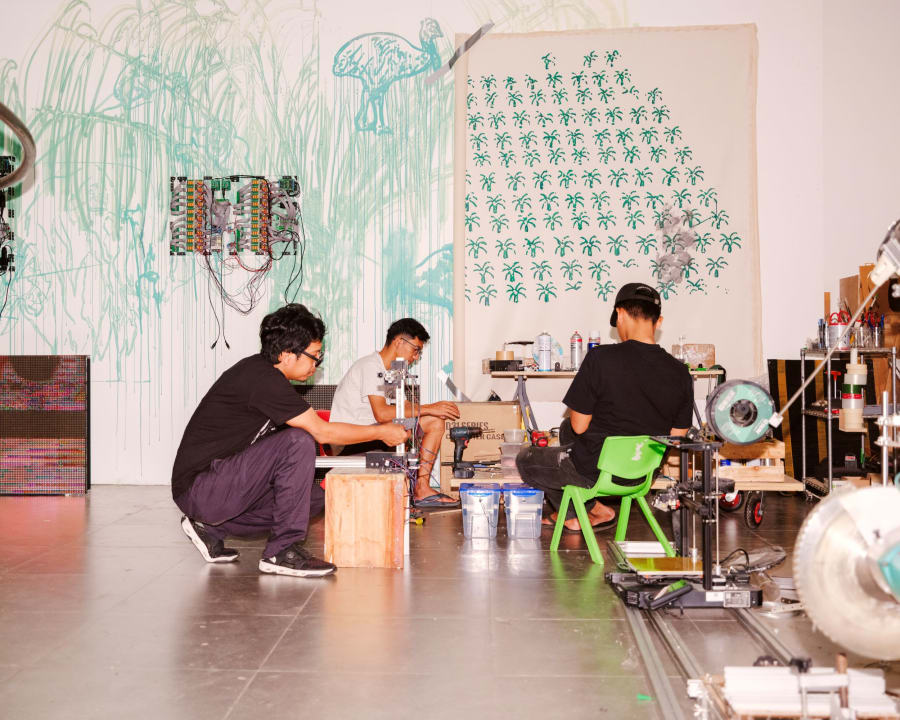In the 16th century, intrepid Portuguese cartographers marked seven islands on the western coast of India as the Ilhas de Bom Baim. In 1668, traders of the East India Company started leasing these islands from King Charles I of England and called the territory Bombay. A series of frenetic land reclamation projects ensued under British colonial rule, and the fishing islands slowly coalesced into a city. Meanwhile, booming mercantile wealth drew thousands of diverse people to this new port to build their lives. A coastal metropolis was born: Mumbai.
‘It was truly a city of opportunity, and opportunity for everyone across the country. When a city is made on the premise of diversity, we cannot ignore this characteristic. Access to capital is still a far-fetched dream for many, but there is a potential for equality beyond immediate identity that this diversity ironically provides; the city offers the possibility of starting afresh,’ explains filmmaker Payal Kapadia. Her stellar breakout film on immigrant lives, All We Imagine as Light (2024), which won the 2024 Grand Prix at the Cannes Film Festival and was nominated for the 2025 Golden Globes, imagines the cinematic light of the city as the hope of its people.
Mumbai, a name the metropolis acquired in 1995, is a constant inspiration for the celebrated film director. The daughter of Nalini Malani, one of the country’s first video artists, Kapadia is able to sensitively portray Mumbai's story because she has lived it and studied it intensely. Now embarking on a film trilogy – she calls it a ‘triptych’ – on the city, she has chosen to investigate ‘the rules of a place without much of a past,’ which could ‘lead to both possibility and tragedy.’
Eminent architect and artist Bijoy Jain loves the warmth of Mumbai. When asked, he strongly recommends a visit to the ancient Banganga Tank, located in the affluent neighborhood of Malabar Hill, home to some of the city's most prominent citizens. ‘It is quite a special place. Places like that were the gathering spaces in Bombay before it was turned into a megacity and before it was colonized,’ muses Jain, who has always believed that architecture must be rooted in sensibility. Besides his pathbreaking built projects around the world, Jain has also presented his Studio Mumbai projects at the Venice Biennale (2016) and the Fondation Cartier in Paris (2023-24) as examples of how architecture can lead the way by ‘being present.’
‘My relationship to the city remains in finding those in-between spaces: the few old built tanks like Gowalia and Banganga, the sliver of beach in front of the governor’s residence, the verdant patches of bountiful green in Walkeshwar, are all that remain as interstitial spaces in a city that is otherwise rapidly eroded and denuded. Yet they represent hope for Mumbai, for what can be built with what is already present and available – an abundance of air, water, and light.’
Fashion designer Ashdeen Lilaowala smiles when he remembers growing up in the south of Mumbai (then Bombay) with its stunning ocean views. ‘One of the most valuable things I remember about it was how multicultural it was,’ he says. Lilaowala belongs to the Parsi Zoroastrian community that migrated to India in waves, starting in the 7th century, to escape religious persecution and have now made the country their home. ‘Though I lived a very sheltered Parsi life, I still remember celebrating every festival from Christmas to Eid, all the Hindu and Jain festivals too. An aunt would take us Parsi children in the local bus for the big festival of Ganesh, celebrated with so much respect, fervor, and love!’
‘Ashdeen’, the designer’s eponymous textile brand, stems from Lilaowala’s quiet pride in and extensive research of the unique Parsi culture, rooted firmly in Mumbai. His stunning boutique located in the Colaba district is known for contemporizing Gara embroidery, a harmonious blend of European, Persian, Indian, and Chinese styles. With this work, Lilaowala continues to tell the stories of his culture through fashion. Several successful global business conglomerates, including the Tata Group, are owned by Parsi families and with their cross-cultural cuisines, philanthropic pursuits, and artistic contributions, they define Mumbai’s plural fabric.
Around the corner from Ashdeen is Jhaveri Contemporary, an art gallery set up in 2010 by sisters and leading gallerists Amrita and Priya Jhaveri. On the third floor of the vintage Devidas Mansion in the heart of historic Colaba, which they love ‘for its historic character, its hotels, cafés, and the leafy streets,’ the duo run a space with a clear focus on representing artists that span both generations and nationalities. ‘It was important for us that the gallery have high ceilings and so we chose this building with easy access.’ Overlooking the landmark Gateway of India and with at least a dozen other galleries nearby, their carefully curated space also reflects how organically Mumbai’s art ecosystem has evolved, with new galleries responding to a growing number of young collectors.
A conversation on Mumbai inevitably segues into its gastronomic riches, as varied as its people. The ubiquitous and well-loved vada (potato patty) in a pao or pav (Portuguese bun), the sweet, chilled fragrant rose falooda of Persian antecedents, and the hot, tannic milky teas in the Iranian cafes are all a part of everyday urban living.
This blend of cultural influences, which can also be seen in costume, language, and customs across the city, has inspired local artists. Shilpa Gupta, whose artworks have been widely exhibited internationally and are part of prestigious collections including the Solomon R. Guggenheim Museum, the Centre Pompidou, and the Mori Art Museum, is among them. In her neon sculpture I Live Under Your Sky Too (2004-2023), she intertwined three languages: Hindi, Urdu, and English. ‘The piece emerges from the migrant fabric of the city. Walking through its streets, we hear countless languages and dialects, reflecting the inevitable mutation and dispersion that occur when cultures and individuals come into contact.’ she says.
Gupta has lived in the Bandra area all her life: ‘One of my deepest associations with the city is its density, movement, and magic. It must have been barely 6 or 7 years ago, when I remember looking out of the window of a high-rise in the evening, from the 26th floor, and seeing cars move, their head lights glowing in the dark, a little diffused. These glowing moving dots felt magical and humbling – as if each one of us is a dot in a sea of endless moving and glowing lights.’
Actor Ali Fazal, who bridges the worlds of Hollywood and Bollywood by working in both the US and India, first came to Mumbai to study at the reputed St. Xavier’s College. The city itself proved a school of sorts too: ‘I used to endlessly listen to people early in my career – it could be on the roads, different places, shops, salons – and I used to keep a record of these things. Colors, feelings, smells [laughs]… I suppose it was another kind of journaling.’ These memories, he says, inform his work today. He was quickly enamored by the freedom the city offered, before finally breaking into the world of cinema and making it big. ‘I was living on my own, in a rented space and mingling with so many diverse peoples, seeing exhibitions, exposed to music and art. I had no money but I had friends from all strata of society. There was a lot of learning.’
Memories and discoveries are at the core of Fazal’s love for his city. He fondly remembers living in the Kala Ghoda district and spending time at its iconic eateries, such as Britannia & Co., Kyani & Co., and Fountain Plaza. Similarly, testing out a new Mumbai restaurant remains a thrill. It is a way for him to stay connected to both the city and his loved ones. ‘I don’t know why I am proud of it, but I feel a sense of belonging. Maybe that’s why I always take people to these places. I feel at home.’
Deepthi Sasidharan is an art historian, curator, and Founder Director at Eka Archiving, a cultural advisory specializing in heritage and museum projects across the Indian subcontinent and Middle East. She also teaches, lectures, and writes across various platforms.
All photos by Avani Rai for Art Basel.
Published on February 10, 2025.


